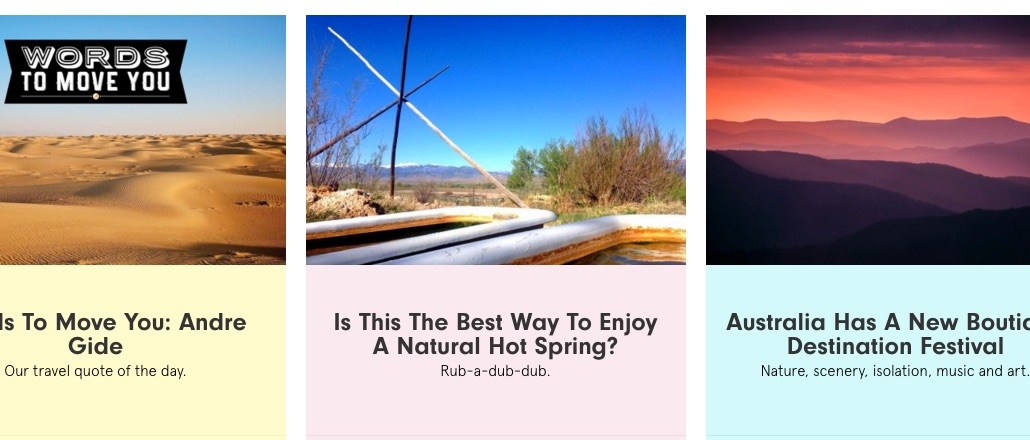Qantas tries to appeal to millennial fliers with branded-content site

Australian airline Qantas, like many brands, wants to reach younger people, so it’s turning to content.
AWOL, a brand-content site created last year with brand-content shop Junkee Media, features original articles and, yes, advertising from local tourism boards, rental car agency Avis and camera maker Olympus. It features articles like “Is this the best way to enjoy a natural hot spring?” and “How to travel with your partner and still like them afterwards.”
Stories are data-driven, said Neil Ackland, CEO of Junkee Media. Coachella, for example, is popular with Australian millennials and drives traffic on flights to Los Angeles, so the four-person editorial team will often write pieces about the festival at that time. The site averages 250,000 uniques a month and 2 million visits since it launched a year ago, according to Qantas.
At the same time, AWOL isn’t that far-fetched of an idea: Airlines have always had in-flight magazines, which in many cases are well-produced publications with their own staff that also carried ads for other brands. The difference here, of course, is the digital distribution angle — AWOL is also distributed on social media and on Qantas.com, said Boundy.
And just like a traditional in-flight magazine, AWOL also carries sponsored content. There’s a story for the South Australia Tourism Board about the next foodie destination, Adelaide. One consistent advertiser, Patagonia, wrote in February about “Life changing thoughts from the edge of the Earth.”
Qantas is relatively rare in this sense. Many brands act as publishers, but few actually derive revenue from their branded-content sites. Equinox, for example, is experimenting with running display ads on its publication, “Q.” Native advertising on a branded-content site can work for the advertiser, as long as the brands work together, according to David Gaines, chief planning officer at Maxus.
Advertisers help offset the costs associated with producing the site, but Jo Boundy, head of digital and entertainment at Qantas, emphasized that the site is foremost about building a relationship with millennials.
“We tried to do a lot in terms of digital for youth audiences,” said Boundy. “But what we found is that a traditional marketing campaign does not work.”
The biggest risk, according to Boundy, was getting the site off the ground, so to speak. “We have so many stakeholders to work with, and it was a challenge convincing them in the start of the journey,” she said. “Now we’re a publisher in our own right, and our 30 million passengers are our readers.”
And there are already signs it’s working: Boundy said that in her most recent studies, intention to fly Qantas has gone up 50 percent among people aged 18 to 34 who have read the site.
More in Marketing

Agencies create specialist units to help marketers’ solve for AI search gatekeepers
Wpromote, Kepler and Jellyfish practices aim to illuminate impact of black box LLMs’ understanding of brands search and social efforts.

What AI startup Cluely gets — and ad tech forgets — about attention
Cluely launched a narrative before it launched a tool. And somehow, it’s working.

Ad Tech Briefing: Start-ups are now table stakes for the future of ad tech
Scaled ad tech companies need to maintain relationships with startups, when the sector is experiencing ongoing disruption due to AI.





